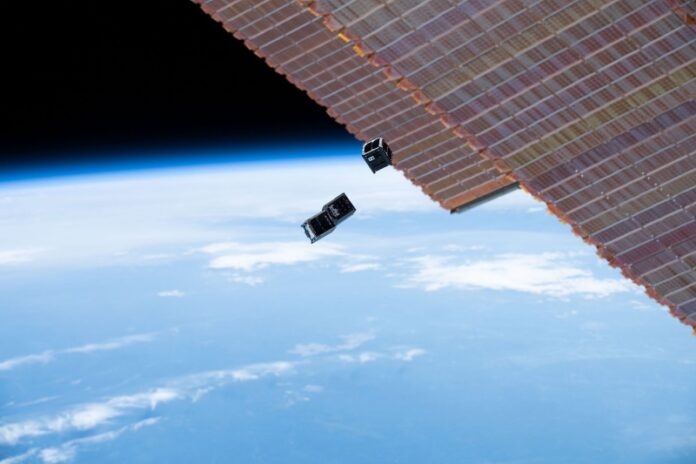
On a quiet Wednesday morning, a small group gathered at Virginia Tech’s Center for Space Science and Engineering Research. Excitedly huddled together around a big screen in a conference room, faculty, staff, and students eagerly awaited the countdown to deployment of the Virginia Cubesat Constellation from the International Space Station.
Virginia Tech’s satellite — the first to be built by undergraduate students and launched into space — along with two satellites from other Virginia universities, were successfully deployed into orbit via the NanoRacks CubeSat Deployer at 10:50 a.m. on July 3.
“The deployment is a great success for our students and all of the faculty and staff in the College of Engineering, Space@VT, and the Hume Center, who helped get us to the point where we have a fully Virginia Tech-built satellite in orbit,” said Jonathan Black, aerospace and ocean engineering professor and director of the Aerospace and Ocean Systems Laboratory for the Hume Center for National Security and Technology. “Thanks and congratulations also to our partners across the commonwealth as we hope this is the first of many launches for this team.”
The Virginia CubeSat Constellation, which began in June 2016, is a collaborative effort between the Virginia Space Grant Consortium and four of its member universities: Virginia Tech, Old Dominion University, University of Virginia, and Hampton University.
Working together as a constellation, the three nano-satellites are each about four inches cubed and weigh approximately three pounds. They have been developed and instrumented to obtain measurements of atmospheric properties and quantify atmospheric density with respect to orbital decay.
Old Dominion University’s satellite, which has a drag brake to intentionally cause orbital decay, is expected to remain in orbit for up to four months, while the satellites from Virginia Tech and University of Virginia should orbit for up to two years.
The next step for this team is establishing communications between the ground stations at Virginia Tech, Old Dominion University, and the University of Virginia with their respective satellites to begin collecting data, which will be widely shared. Data analysis will take place using a tool being developed by students from Hampton University. The data and measurements will give researchers a better, more accurate modeling of atmospheric conditions in low orbit, as well as provide opportunities for students to gain experience in networking, cloud computing, and network storage.
This achievement is the culmination of several years of hard work by an interdisciplinary team of 50 undergraduate students from the College of Engineering and the College of Science who developed Virginia Tech’s CubeSat at the Center for Space Science and Engineering Research.
– Written By Jama Green
– Photos By Courtney Loan

